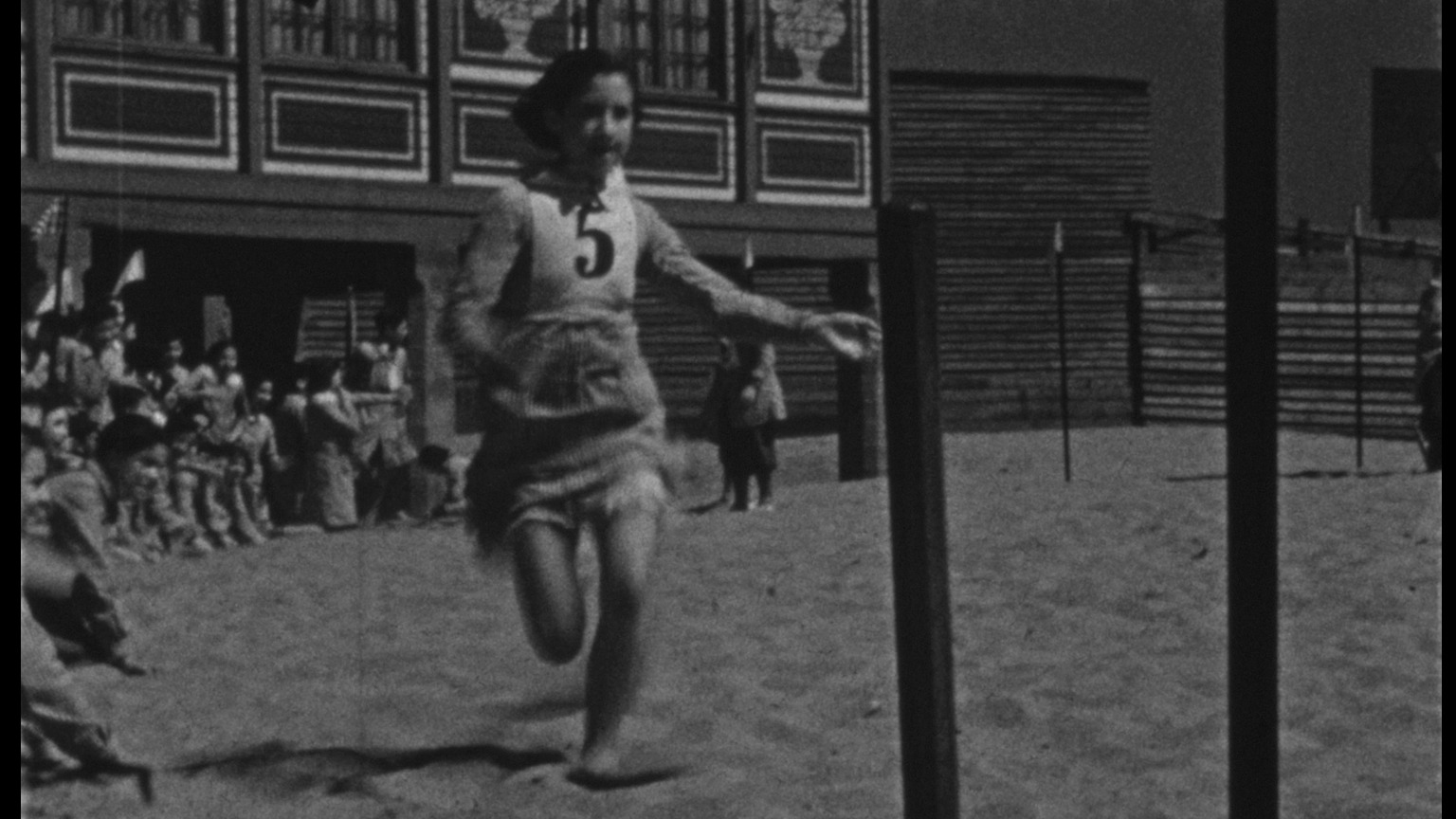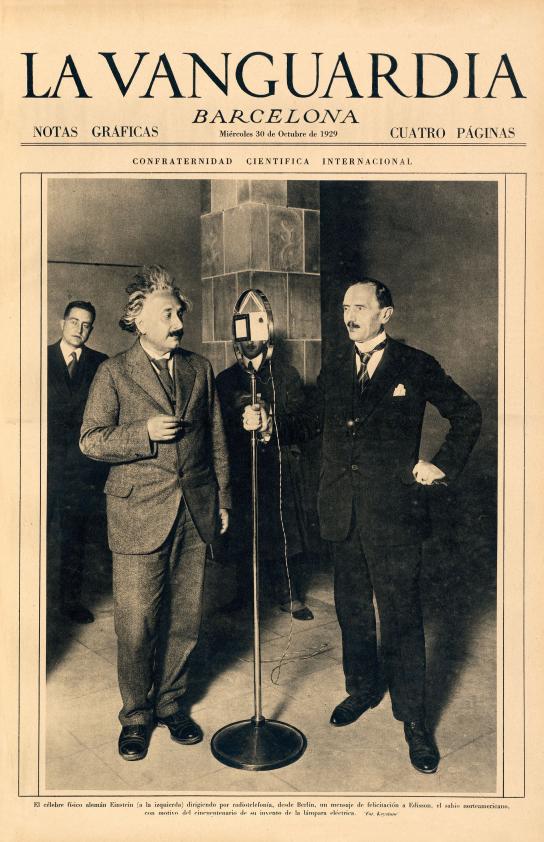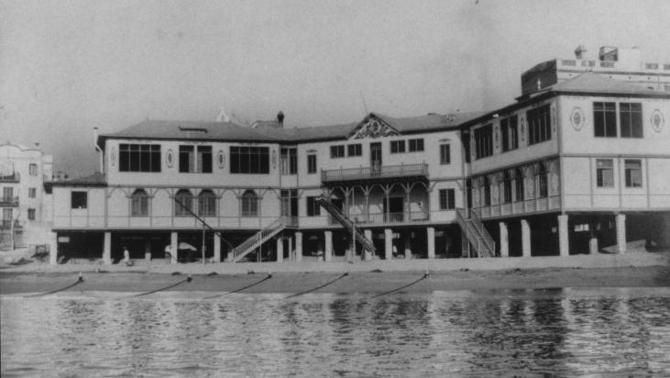The “Escola del Mar” (Sea School)
A benchmark for pedagogical renovation
In August 1921 the Sea School was inaugurated on the beach of Barceloneta. It is, for many reasons, a very special school.
Why on the seashore?
At that time, almost 90% of the children in the municipal schools suffered from some health issues: tuberculosis, bronchitis, scrofula, or anaemia, among others. To improve the health of these most vulnerable children, the City Council promoted a series of measures, such as organizing summer camps, creating open-air public schools, such as the Forest School, inaugurated in 1914 in Montjuic, or setting up the sea bathing service, directed by the pedagogue Pere Vergés. The children spent the day at the beach doing exercises, playing games and -very important for the often complex economic situation of the family- having lunch. They were children of working-class families who could not access the beach and often lived in very precarious hygienic conditions.
Education and health.
The success of the sea bathing service led Pere Vergés to set up a school on the beach. Thus, the “Escola del Mar” was born, combining teaching with bathing and sports and games in the sand, which allowed to strengthen those sickly children.
The construction of the “Escola del Mar” was the work of Josep Goday and was located on the Fishermen’s Beach of Barceloneta, at the end of Concordia Street. It was a wooden building with reinforced concrete pillars that raised it slightly from the sand of the beach. The first floor was occupied by the kindergarten and the dining room, and on the upper floor there were four classrooms and an auditorium. It was a building with a huge “outdoor classroom”: the beach, where most of the activities took place.

The objective was the education of citizens.
On August 3, 1921, the mayor of Barcelona, Antoni Martínez Domingo, and the president of the Commission of Culture, Nicolau de Olwer, officially inaugurated the Sea School. The actual teaching activity would not begin until January 26, 1922, but that summer the facilities already hosted the sea bathing service.
At first the school accepted only children from poor families with some health issues. Later, the neighbours of the neighbourhood asked to be able to take their children there as well.
The “Escola del Mar” was constituted as a public pedagogical institution born as an initiative of the Technical Advisory of the Culture Commission of the Barcelona City Council, directed by Manuel Ainaud Sánchez. Inspired by the pedagogical renovation of the “Modern School” promoted by Ferrer y Guardia, and thanks to Pere Vergés y Farrés, teacher and pedagogue, promoter of a new pedagogical system alongside with Ferrer y Guardia, Rosa Sensat or Madrid Francisco Giner de los Rios with the Institución Libre de Enseñanza. At the beginning of the 20th century there will be a pedagogical renovation with young pedagogues who wanted to impart new teaching systems different from the memoristic ones practiced by the church, which was the dominant one in the educational field.
Unconventional.
The “Escola del Mar” was a reference point for pedagogical renewal. It was a mixed school, without textbooks or exams, where conventional subjects were not taught. In class they listened to classical music, played with puppets, chess, drew or wrote chronicles in the magazine that the students themselves edited: Garbí. On the beach, they took baths and played a variety of outdoor games. According to Pere Verges, it was conceived to create future democratic citizens.
At the beginning of the school year, students were divided into groups of three colours (brown, white and green), which competed in the different school activities. The students themselves managed the library or the weather service, among others. Each group democratically chose its leaders, and there was a General Council with decision-making power over the organization of the school. The school was a small republic governed by its students.
They have burnt the School!
7 January 1938. In the middle of the Civil War. An incendiary bomb dropped by the Italian fascist air force hit the “Escola del Mar”. The attack caused no casualties, but the wooden building was razed to the ground by fire and was never to be rebuilt on that site.
The Sea School continued its activity far from the beach. First in the Balaguer house, a chalet located in the Gardens of the Rose Garden of Montjuic, and in 1948, when the facilities of the Rose Garden had become too small, the Sea School moved to the old farmhouse of Can Sores, in the mountain of Guinardó, where it has continued to the present day.

Einstein in “La Escola de Mar”.
On 22 February 1923, Albert Einstein arrived in Barcelona by train, accompanied by his second wife, Elsa, from a tour around Japan and Palestine.
Einstein had received the Nobel Prize in Physics in 1921 for his research. His fame and international recognition had prompted him to make numerous trips around the world at the invitation of fellow scientists. According to his official diary, on 27 February, a Tuesday, Einstein visited the Escola de Mar.
A film protagonist.
The “Escola del Mar” deserves the attention of the cinema pioneers in Catalonia.
As early as 1922, two documentaries were filmed at the school, promoted by the City Council’s Cultural Commission. From all over the world. Throughout its 100 years of History of Barceloneta in Guinardó, there have been several films. The last one to commemorate the centenary is the documentary by Francis Manzano Rojas “Blau, blanc, verd” (2022). The documentary will be screened in the neighbourhood on 14 January at 6 p.m. at the Barceloneta Civic Centre, in a session organised by the School’s Alumni Association.




